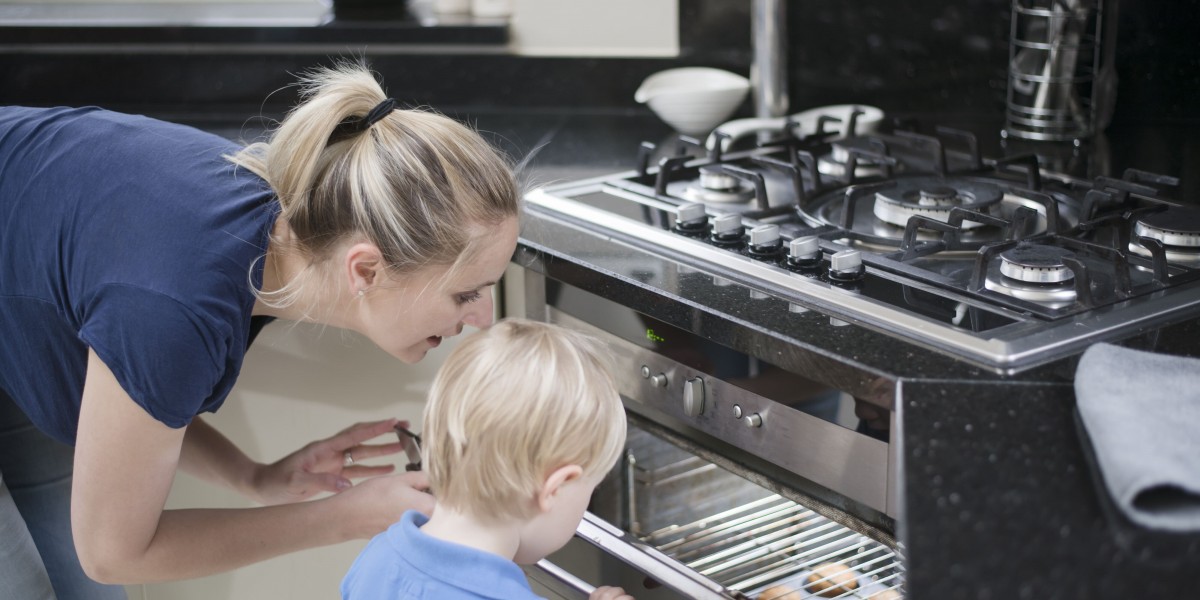The Ultimate Guide to Built-in Ovens: Enhancing Your Kitchen Experience
Built-in ovens have actually ended up being a popular option in modern-day kitchen areas, offering a mix of performance, design, and benefit. Unlike standard freestanding ovens, built-in ovens are integrated flawlessly into cabinets, offering a structured look that can boost the aesthetic appeal of any kitchen. This short article explores the different kinds of built-in ovens, their benefits, setup considerations, and upkeep suggestions.
Comprehending Built-in Ovens
electric built in ovens uk-in ovens are designed to be set up directly into kitchen cabinets, permitting a more customized kitchen setup. They generally come in 2 main types: single and double Ovens And Hobs.
Types of Built-in Ovens
Single Ovens: These systems provide one cooking compartment, suitable for smaller cooking areas or homes where cooking needs are modest.
Double Ovens: As the name suggests, these systems feature two different cooking compartments, permitting users to cook numerous dishes at different temperatures all at once. This is particularly useful for large families or those who often amuse visitors.
Steam Ovens: These ovens prepare food using steam, which can help keep wetness and nutrients. Steam ovens are getting popularity due to their health benefits.
Mix Ovens: These flexible appliances combine the functions of a regular oven and a microwave, making them best for fast cooking and reheating.
Key Features to Look For
When thinking about a built-in oven, there are a number of features that can improve your cooking experience:
Smart Technology: Many contemporary built-in ovens come geared up with wise technology, permitting users to manage their oven remotely by means of smart device apps. Features include preheating the oven, adjusting cooking times, and monitoring cooking development.
Self-Cleaning Functions: Built-in ovens with self-cleaning capabilities can save time and effort in kitchen upkeep.
Convection Heating: This function flows hot air for even cooking, making it ideal for baking.
Safety Features: Look for models equipped with features like cool-to-the-touch oven doors and automatic shut-off options for included safety.
Benefits of Built-in Ovens
Aesthetic Appeal: Built-in ovens supply a smooth and modern appearance that can improve the overall design of a kitchen. They can be incorporated into cabinets, making them less invasive than freestanding designs.
Area Efficiency: Built-in ovens optimize kitchen space, especially in smaller kitchens where every inch counts. They can be positioned at eye level, making it simpler to monitor cooking without bending down.
Improved Functionality: With their innovative functions, built-in ovens provide improved cooking experiences and increased functionality compared to standard ovens.
Setup Considerations
Installing a built-in oven requires cautious planning and factor to consider. Here are some bottom lines to keep in mind:
Space Requirements: Ensure that the chosen oven fits snugly into the readily available cabinet area. Procedure the measurements precisely, accounting for ventilation and clearance requirements.
Electrical Requirements: Built-in ovens generally require a dedicated electrical circuit. Seek advice from with an electrical contractor for appropriate installation.
Ventilation: Proper ventilation is essential for optimal oven performance. Validate that the installation area has sufficient ventilation to avoid getting too hot and ensure safe operation.
Expert Installation: While DIY installation might seem tempting, employing the aid of an expert can make sure that the oven is installed properly and safely.
Setup Steps
| Installation Step | Description |
|---|---|
| Step 1: Measure | Measure the cabinet opening for your oven. |
| Step 2: Prepare | Prepare the electrical outlet and ventilation choices. |
| Step 3: Connect | Connect the oven to power, ensuring all precaution are followed. |
| Step 4: Secure | Secure the oven within the cabinets, utilizing suitable screws and brackets. |
| Step 5: Test | Run a test to make sure the oven is functioning effectively. |
Maintenance Tips
Routine maintenance can extend the life of your built-in oven and make sure optimal efficiency. Here are some upkeep pointers:
Clean Regularly: Wipe down the oven outside and tidy the interior routinely. Use self-cleaning functions where readily available.
Examine Seals: Ensure that door seals are undamaged to preserve efficiency and cooking efficiency.
Display Performance: Pay attention to how your oven functions-- if you see unequal cooking or uncommon sounds, it may require expert maintenance.
Follow Manufacturer Guidelines: Always abide by the maintenance standards supplied by the maker. This can assist prevent problems and make sure that service warranties stay valid.
Frequently Asked Questions about Built-in Ovens
What is the distinction in between a buy built in oven-in oven and a freestanding oven?
- Built-in ovens are integrated hob and oven into cabinetry, providing a streamlined appearance, while freestanding ovens are standalone appliances that can be positioned anywhere in the kitchen.
Do built-in ovens require more maintenance than routine ovens?
- Not necessarily. Maintenance depends on use and cleaning routines more than the kind of oven. Routine care is essential for all ovens.
Can I install a built-in oven myself?
- While it is possible to install a built-in oven yourself, it is suggested to hire an expert to make sure safe and accurate setup, especially regarding electrical requirements.
What are the typical costs of built-in ovens?
- Costs can differ significantly based upon brand, functions, and specifications. Fundamental models may start around ₤ 800, while high-end models can exceed ₤ 3,000.
Are built-in ovens energy-efficient?
- Many modern-day built-in ovens are created to be energy-efficient. Look for designs with an ENERGY STAR certification for the best efficiency.
In conclusion, built-in ovens are an outstanding addition to any modern kitchen, combining aesthetics with performance. By comprehending the various types of built-in ovens, their functions, and the associated installation and maintenance requirements, homeowners can make an educated choice that enhances their cooking experience and total kitchen style. As cooking technology develops, Bosch Stainless Steel Built-In Electric Oven ovens are most likely to play an integral function in the future of home kitchen areas, guaranteeing scrumptious meals are prepared with ease and benefit.








